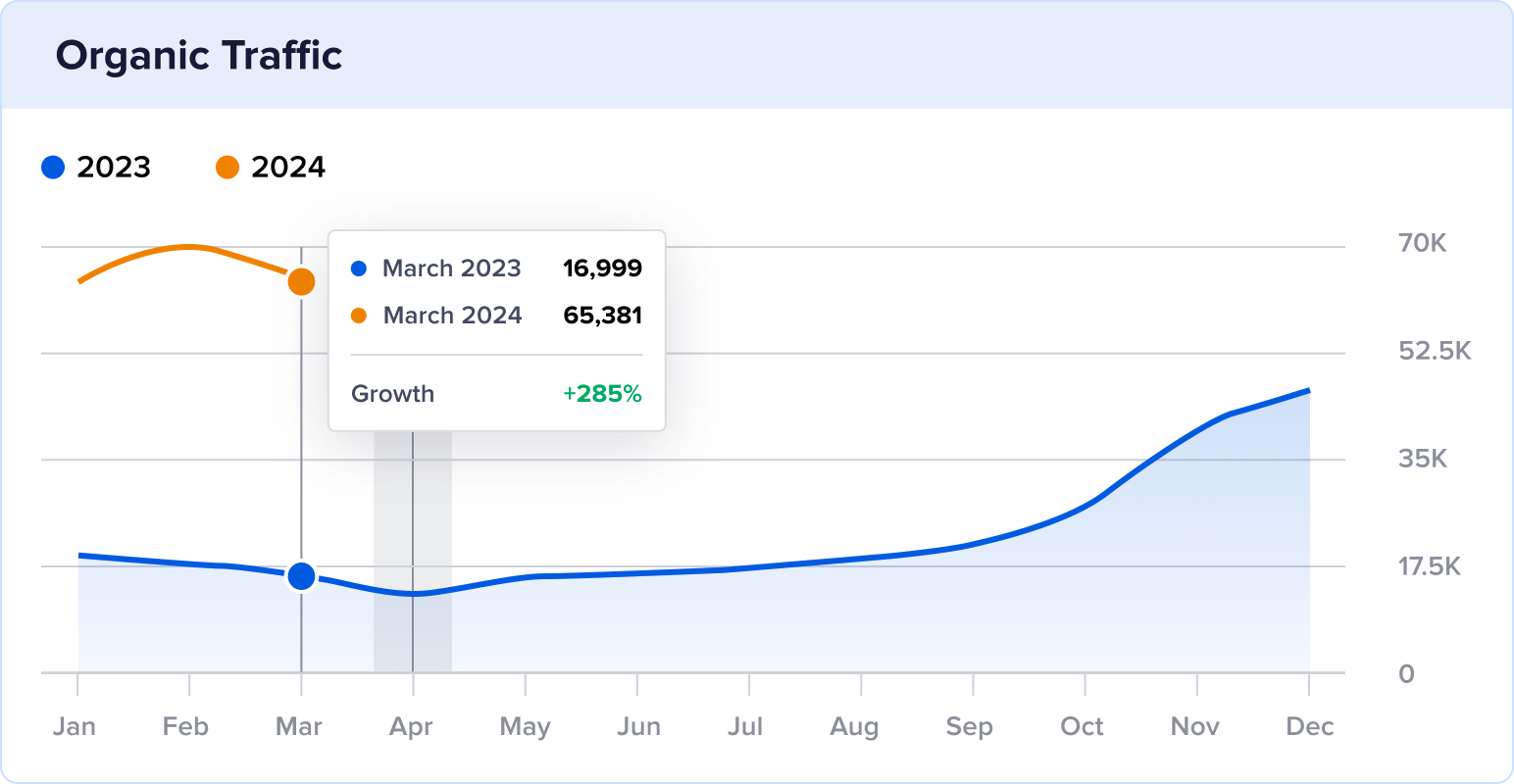How a Content Services Website Grew Traffic by 300% in 3 Months
https://thecontentauthority.com/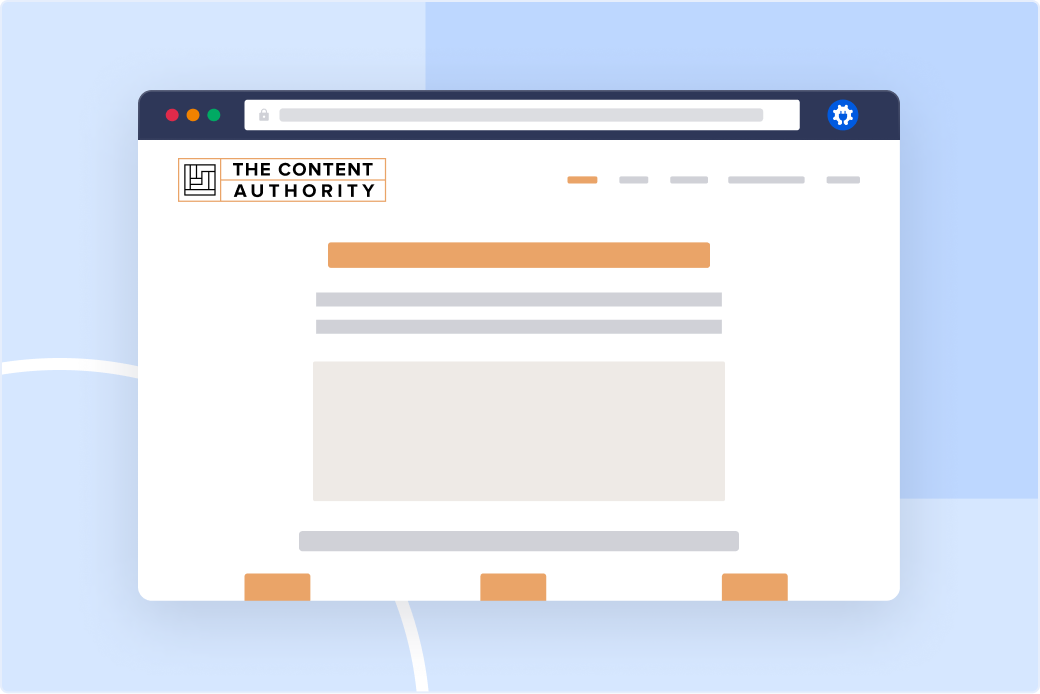
Stats
110K to 438K Monthly Visits
Industry
Digital Marketing
Niche
Content Writing
Reporting Date
August 2023
Creating content that drives traffic has become more challenging than ever.
With a staggering 7.5 million blogs published daily, website owners are up against competitors worldwide to stand out in the digital landscape.
That’s why sometimes you have to get creative, which is exactly what thecontentuauthority.com did.
Join us as we discuss how a content marketing website not only stood out but cracked the code to explode its traffic by 300% in just 3 months.
We’ll show you how they did it and how you can, too.
Let’s get started.
In This Article
About The Content Authority
The Content Authority was founded in 2009 and first appeared online in October.
It’s a content writing service provider and offers a range of deliverables. Clients may order blog content, copywriting, eBook ghostwriting, press releases, and more.

The Content Authority has a budget-conscious approach, emphasizing “high quality for less money” on its website. They aim to deliver affordable, SEO-optimized content that produces results for their clients.
Historical Performance
Despite its 14-year online presence, thecontentauthority.com never really took off.
Semrush historical data reveals that most of the website’s organic traffic stayed in triple digits, with low one-thousand months being far and few between.
The most significant spike in traffic occurred in July 2021, with 182,377 visits.
Unfortunately, it was short-lived.
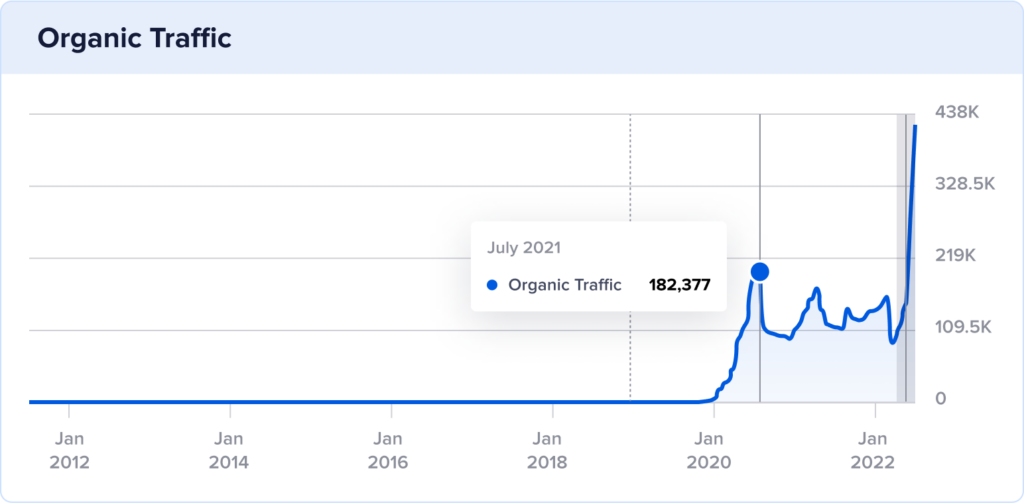
This traffic fell to 104K visits the following month.
Since then, the website has been teetering in the 90-100K range for the past 2 years.
That all changed in August 2023 when The Content Authority reached 438K visits, its highest record to date.

So, how did they break a stagnant online presence? And what was it that finally moved the needle?
We’re going to reveal those answers next.
The Catalyst: How The Content Authority Grew Traffic by 300% in 3 Months
The Content Authority grew organic traffic by performing the following:
- Leveraging programmatic SEO
- Targeting misspellings
- Acquiring more backlinks
1. Leveraging Programmatic SEO
In 2023, The Content Authority focused its efforts on its namesake: content.
At the start of the year, the website had 1,192 pages.
As of August, there are 75,882 pages.
Here we see a breakdown of how The Content Authority amplified content production in the summer months:

Realistically, this output is intangible for human-written content, even on a large team. Let alone a small company that, according to LinkedIn, has 48 employees. (And not all these are writers.)
So what did they do?
Employed programmatic SEO.
Programmatic SEO uses a template, database, and automation to produce many pages in a short amount of time. Its main advantage is scalability, allowing you to increase content production quickly.
Now, as good as it sounds, programmatic SEO isn’t a golden ticket. It’s only as good as the data you provide, meaning it still requires work to get it right.
Why this matters:
Keyword research, understanding search intent, and a robust template are crucial for AI content to be successful.
It’s also important to note that this strategy isn’t risk-free. Duplicate or low-quality content can violate Google’s spam policies, leading to penalties.
Because of this, approach programmatic SEO with caution. Assess if AI-generated content aligns with your business objectives before choosing this process.
This article shares the pros and cons to help you decide if programmatic SEO will work for you.
Note: Since we first analyzed this website in August 2023, organic traffic has dropped by half in October 2023. Google’s Helpful Content Update may have penalized The Content Authority in September, resulting in a loss of traffic.
How to do programmatic SEO on your site:
This Zapier blog shows how to do programmatic SEO on your website.
Keep in mind that you don’t have to leverage programmatic SEO for content creation alone.
You can automate certain processes without forfeiting original, handwritten content altogether.
Some ways of doing this are:
- Using AI to write your meta titles and meta descriptions
- Generating image alt text and title tags automatically with image smart tags
- Automatically redirecting 404 pages to your homepage (or any custom page)
- Installing an SEO plugin to get internal linking suggestions directly in WordPress
Tools for programmatic SEO:
All in One SEO (AIOSEO) can help you automate SEO processes to streamline your optimizations.
We have a tool for each automated task in the above bullet point list:
- For writing metadata: AI Title/Description Generator crafts unique and compelling metadata in just 1 click.
- For image SEO: Turn on Image SEO to add smart tags and generate image attributes automatically.
- For 404 redirects: Redirection Manager helps users and bots navigate your website and avoid page not found errors. You can also redirect your entire site to a new domain in just a few clicks.
- For linking: Link Assistant presents internal linking suggestions in the WordPress editor. You no longer have to scour your site for relevant content or craft anchor text. This tool does it for you.
2. Targeting Misspellings
Of its 75,882 pages, an astonishing 75,230 are “vs” blogs. That is 99% of the entire website.
Furthermore, these blogs bring in 80% of the website’s US traffic.
Here is a list of some of their most popular vs blogs:
- Cruncy vs Crunchy: Decoding Common Word Mix-Ups
- Excel Vs. Accel: What’s The Correct Spelling Of This Word?
- Adress Vs. Address: What’s The Correct Spelling Of This Word?
- Enterance vs Enterence: Which Should You Use In Writing?
These page titles show that The Content Authority has capitalized on traffic from commonly misspelled words.
The top-ranking keywords confirm this theory, as shown below.
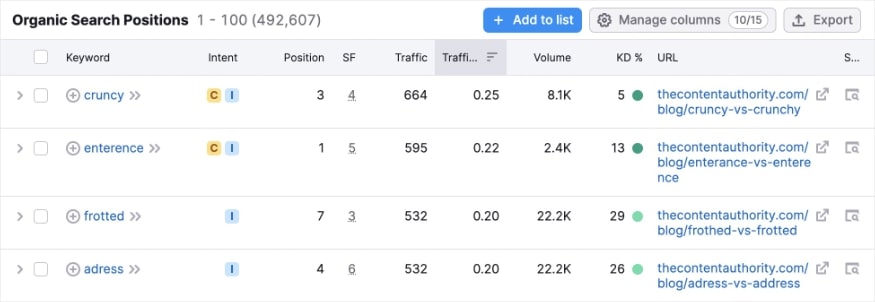
Why this matters:
Within the context of content writing, addressing spelling mistakes makes sense. However, this approach isn’t suitable for all businesses.
When targeting keywords, you must consider relevancy over search volumes. It’s critical to select topics that resonate with your audience and align with your niche.
Keyword research will allow you to identify relevant keywords for new ranking opportunities.
How to do keyword research for your site:
This keyword research guide shows you how to do it using popular SEO tools.
Here’s a review of basic keyword research steps:
- Start your search with a broad term. (For example, if you’re a jewelry e-commerce, you may start with “necklace.”
- Find related keywords.
- Export all keywords into a spreadsheet.
- Repeat steps 1-3 for other broad terms.
- Organize keywords using topic clusters to start building your content strategy.
Tools for doing keyword research in WordPress:
Did you know you can perform keyword research without ever leaving WordPress?
All in One SEO makes this possible with Semrush Keyphrase Suggestions.
Once you’ve added a focus keyphrase to your blog, our tool can fetch relevant keywords in a single click.
Here’s an example of the keyword suggestions for a patio furniture page:

Once you Add Keyphrase, our TruSEO tool will analyze your optimizations for the new keyword. We’ll also give you actionable recommendations for areas that need improvement.
Next, we’ll look at the final contributing factor to The Content Authority’s growth: backlinks.
3. Acquiring More Backlinks
In addition to a rapid content output, The Content Authority also upped its backlinking efforts.
We see a steady and impressive growth of backlinks between April and August.

While the latter had 64K, this actually wasn’t a record-breaking month.
In October 2021, The Content Authority had its highest number of backlinks ever at 68K. What they didn’t have was (1) the level of content production we see in 2023 or (2) the traffic to show for it.
Why this matters:
When The Content Authority tried backlinks on their own in 2021, it didn’t appear to work. In 2023, they revised this approach and focused on content production with backlinks as a complementary strategy.
This turned out to be the winning combo that fuels their exploding growth today.
Backlinks act like endorsements for your site. They’re among the top two Google ranking factors and help boost visibility.
Note: Not all backlinks are created equal. It’s important to monitor your site’s backlink profile to avoid unnatural or spammy backlinks, which can lead to Google penalties.
How to do link building for your site:
This backlinking guide explains how to identify and obtain high-quality backlinks. It emphasizes quality over quantity and relevancy.
It’s also important to note that a robust linking strategy doesn’t stop at backlinks.
You should also optimize for the following links:
- Internal links (from one page on your site to another page on your site)
- Outbound links (from your site to another external site)
This guide to link building has everything you need to know to optimize for all three types of links.
Tools for link building:
AIOSEO’s Link Assistant can help you locate and add internal links quickly. With link suggestions that populate directly in the WordPress editor, it’s as easy as clicking Add Link.
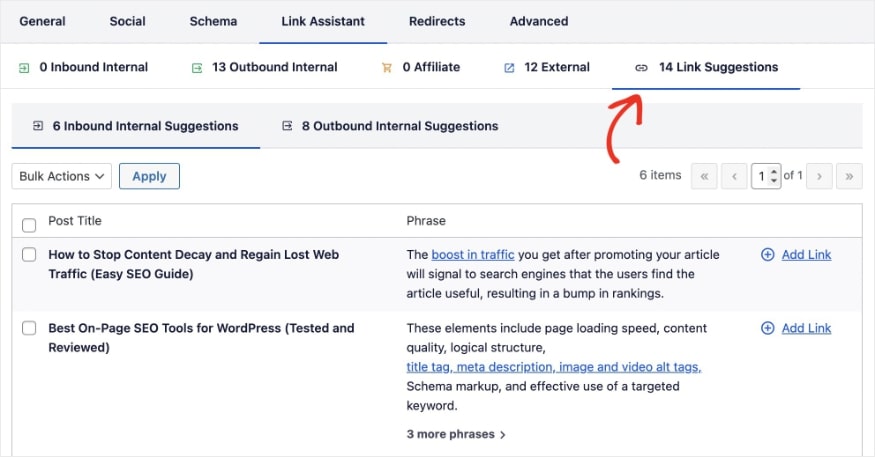
Standout SEO Wins
Before we conclude, there’s another SEO technique worth highlighting on thecontentauthority.com:
1. They optimize for content readability.
Content readability determines how easily users can read and understand content. It plays an important role in comprehension and user engagement.
While it isn’t a direct Google ranking factor, readability influences some SEO metrics, such as time on page, conversion rate, and bounce rate.
The Content Authority makes the following optimizations for readability:
- They use headers and subheaders. The Content Authority does a good job of using a single H1 and subheaders in its content. These subheadings guide readers through the content and tell bots which sections are most important. (For example, an H2 is of more importance than an H4.)
- Bullet points and numbered lists increase scannability. The Content Authority frequently uses lists to break up blocks of text and improve scannability. This technique helps users more easily digest information, especially in long-form content.
Tool: With TruSEO Analysis, subheading distribution and readability are checked automatically for you. These factors contribute to the TruSEO Score, which gives you a comprehensive overview of your content’s SEO performance. We’ll also give you actionable tips for anything that needs improvement.
Below is an example of Readability suggestions from TruSEO.
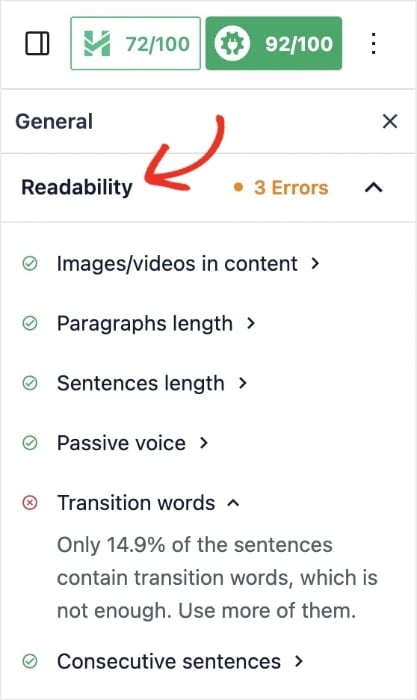
Takeaways
In our analysis of The Content Authority’s growth story, we’ve uncovered the strategies that contributed to its explosive success.
Now, let’s review which ones you can apply to your website and strategies that may benefit from reevaluation.
Top 3 Strategies to Emulate
- Streamline content creation and optimizations with automated processes. The Content Authority used programmatic SEO to create and publish thousands of pages in just a few months. While we don’t recommend replacing the entire content creation process with AI, it can be a powerful tool for specific tasks.
- Think outside of the box before discrediting keywords. The Content Authority creatively spun misspellings into some of its highest traffic-driving pages. They also recognize the search intent behind these queries and give users what they’re looking for (which isn’t a misspelling).
- Build more backlinks to your website. Backlinks act like votes of confidence, signaling your site’s credibility to search engines. We suggest a quality-over-quantity approach when link building. A handful of backlinks from reputable sites is worth more than thousands of spammy links.
Bottom 3 Strategies to Reconsider
- Missing easy metadata wins. There’s room to improve basic on-page SEO, which is distressing for a service provider that sells SEO-optimized content. Certain pages are missing meta descriptions, using duplicate meta titles, or getting truncated on the SERP. An AI generator can fix this issue and write metadata for you. You can then check the length with a SERP snippet tool.
- Neglecting multimedia and image SEO. The Content Authority has minimal imagery on the site. And for the images it does have, they’re not optimized for search engines. Images play an important part in a positive user experience. They also present unique opportunities to rank in Google images. AIOSEO’s image SEO makes optimizing images easy. You can use smart tags to generate titles and alt text automatically.
- Overlooking the Blog’s User Experience. Despite the comprehensiveness of most of its blogs, The Content Authority could improve the user experience. The blog is riddled with ads, which distracts from the content. It also makes you question the intent of the blog. Is it really aiming to convert blog visitors to customers? Or is it simply a way to generate revenue from ads?
Steal Our Winning SEO Strategy: A Checklist for Your Website
Want to replicate The Content Authority’s organic growth on your site?
We’ve got you covered with 50 SEO checklist items to help you skyrocket traffic and boost online visibility.
Download A Free SEO Checklist
Access our comprehensive SEO Checklist with a single click. We’ll deliver it straight to you, putting actionable items with SEO tools and tutorials right at your fingertips.
Enter your name and email to download a free SEO checklist.
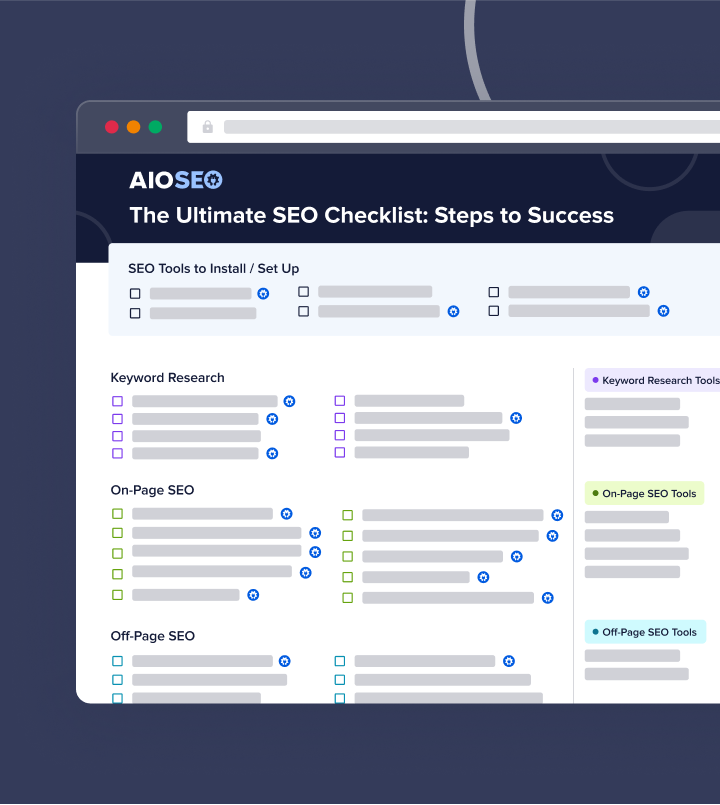
Grow Your Organic Traffic With AIOSEO
What about skipping the checklist and taking a direct route to a winning SEO strategy?
AIOSEO is the best WordPress SEO plugin on the market and does the heavy lifting for you.

Trusted by over 3 million website owners and marketers, AIOSEO makes it easier than ever to improve your website’s SEO. Our powerful suite of tools helps you streamline your optimizations to get results and save time.
Here are some of our favorite features:
- AI Title & Description Generator: Our newest feature revolutionizes how you write titles and descriptions. This game-changing tool uses AI to automatically craft unique and click-worthy metadata for any page on your site.
- Image SEO: Turn on automatic image alt text and title attributes with just 1 click. You’ll save time from manual entries while helping users and search engines understand your images.
- Redirection Manager: Create a seamless user navigation experience that prevents humans and bots from running into 404 errors. Our Redirection Manager helps you easily choose and implement the best redirect type when you move content.
- Link Assistant: Apply internal linking best practices with easy linking suggestions and reports. These tools will help boost content discovery and prevent orphan pages.
- Semrush Keyphrase Suggestions: Perform keyword research without ever having to leave WordPress. AIOSEO connects with your Semrush account to pull keyword ideas from its database and serve them to you in the WordPress editor.
- TruSEO On-Page Analysis: Get an in-depth but easy-to-understand analysis of your optimization efforts. Each page includes an actionable checklist to help you maximize your content’s reach.
- RSS Content: Have a site that produces a lot of content? RSS sitemaps tell search engines when you’ve published or updated content. AIOSEO automatically generates RSS sitemaps for faster crawling.





